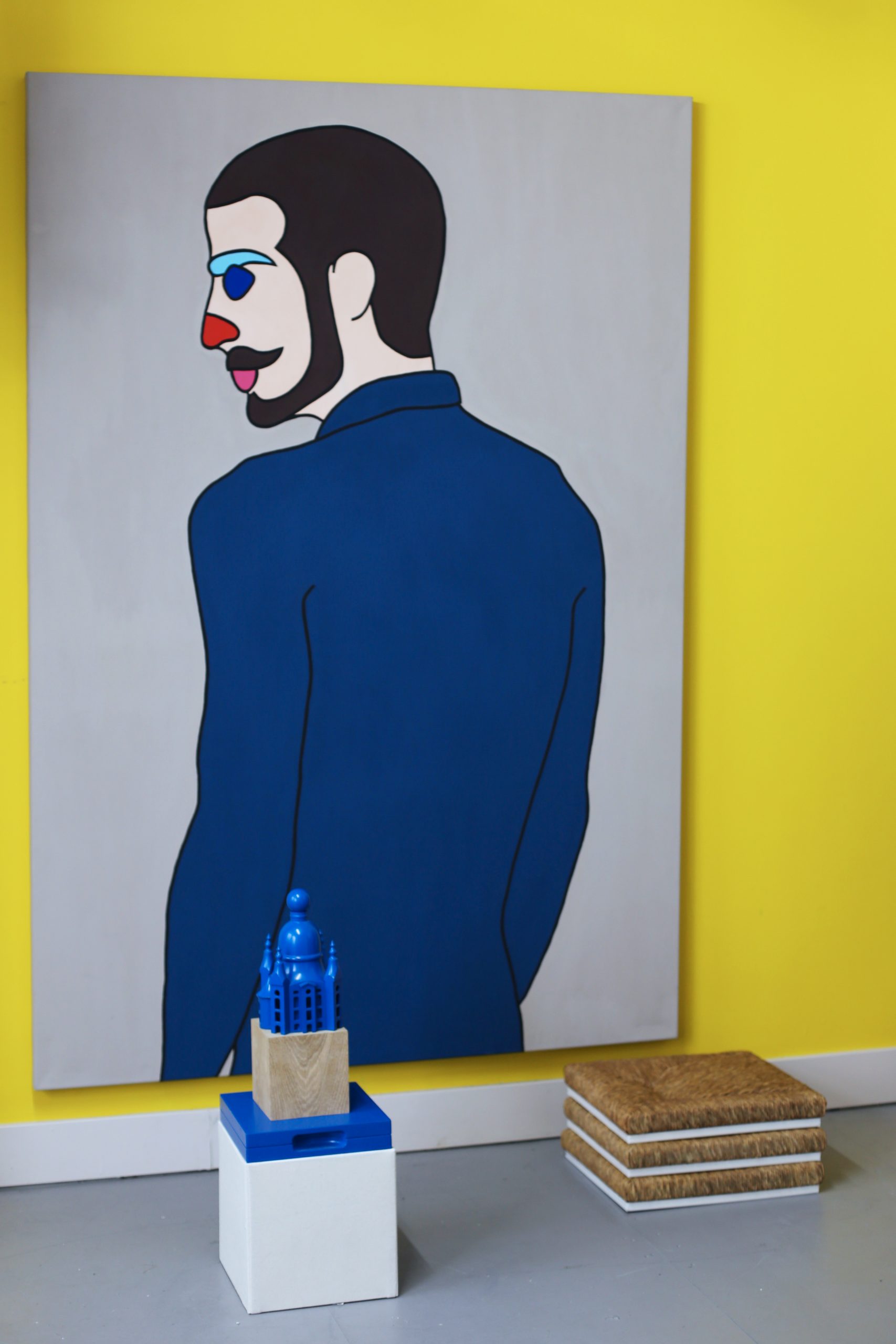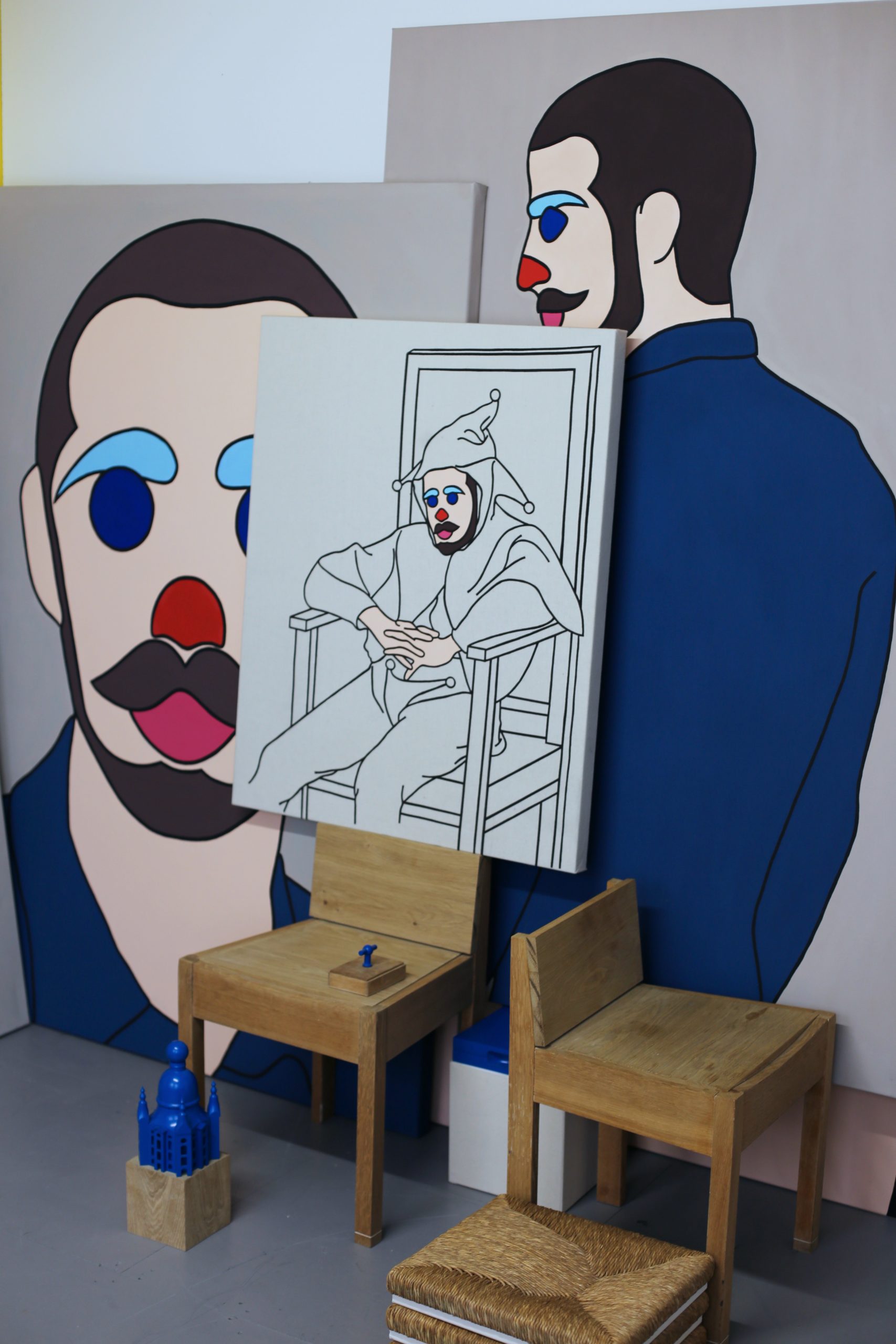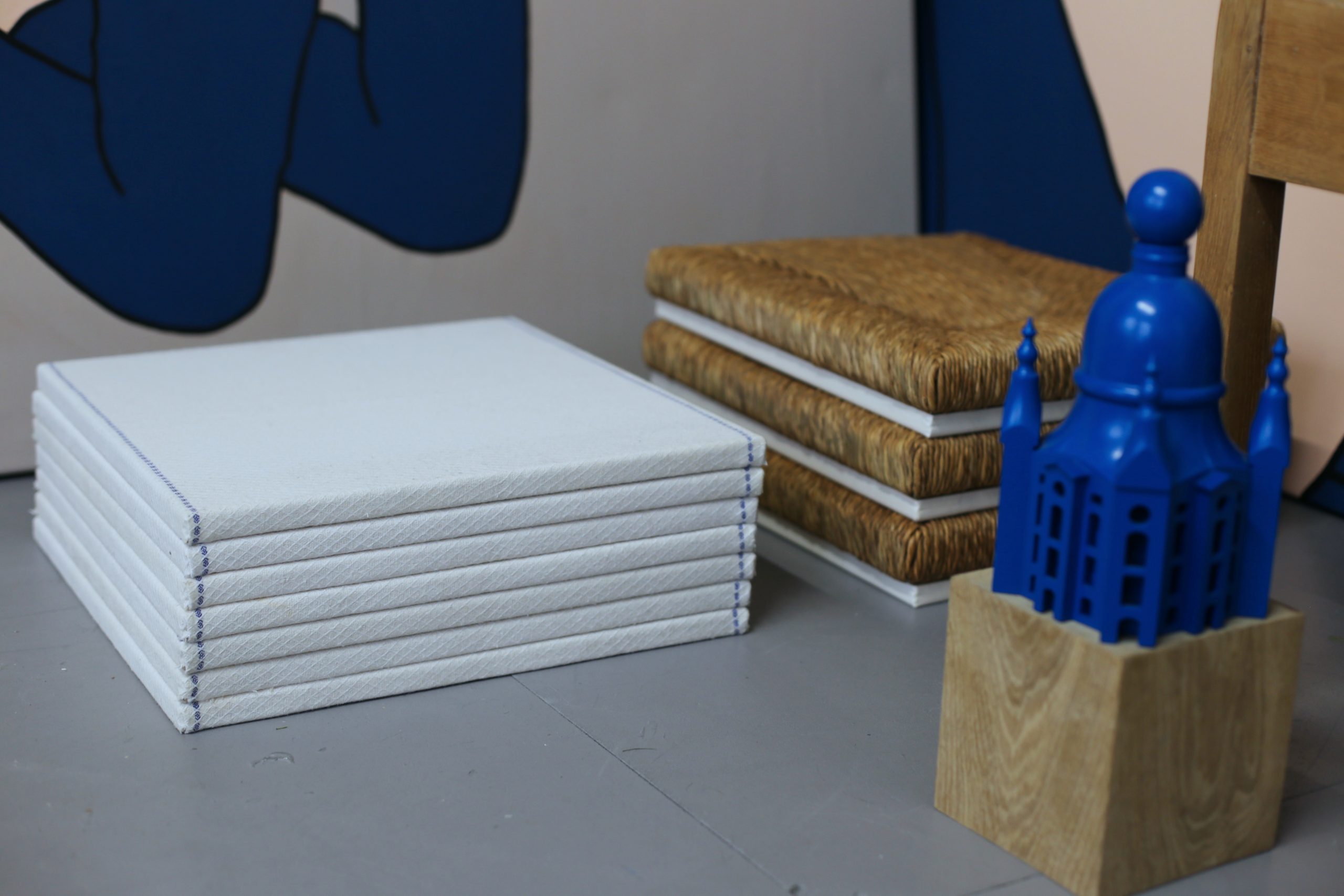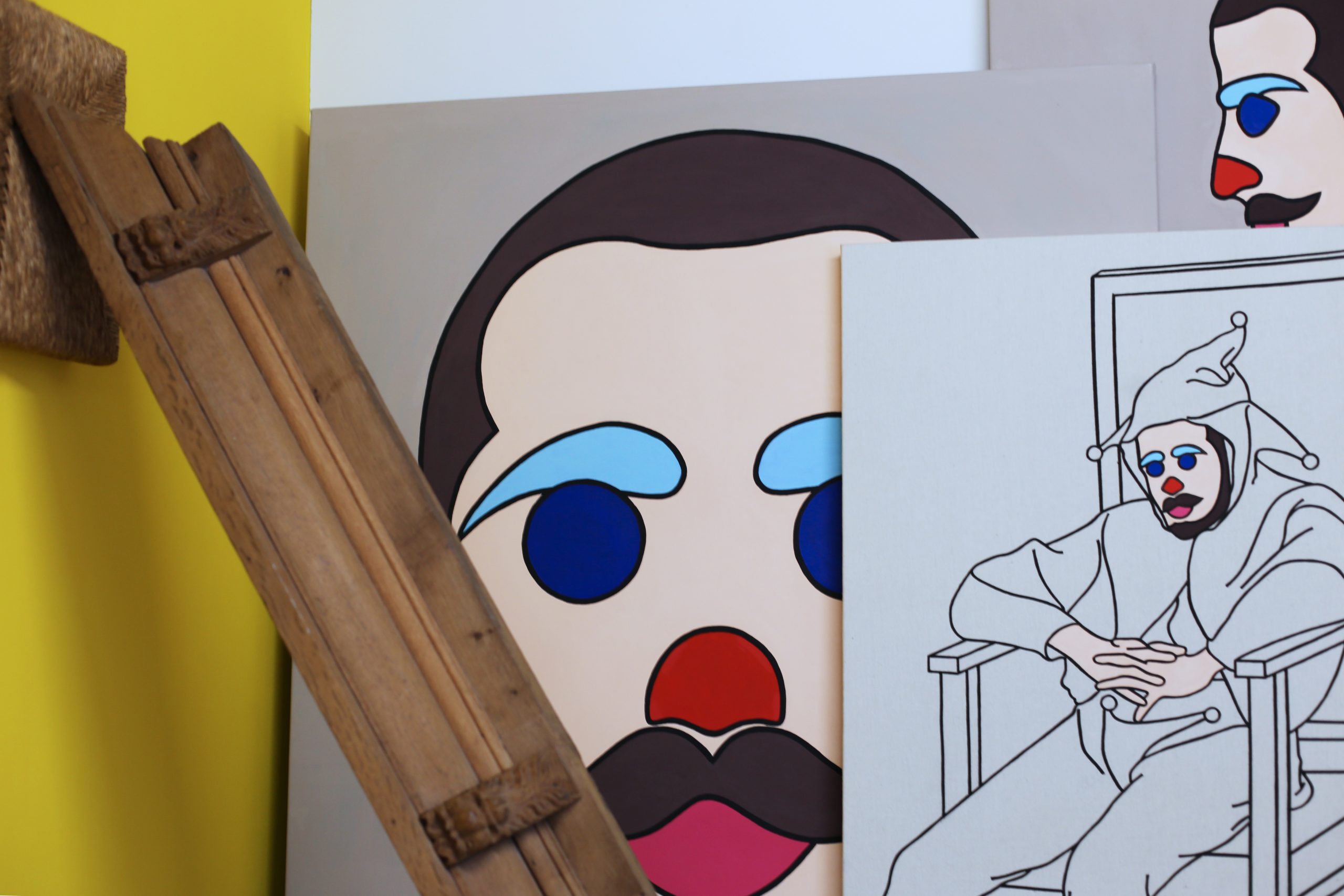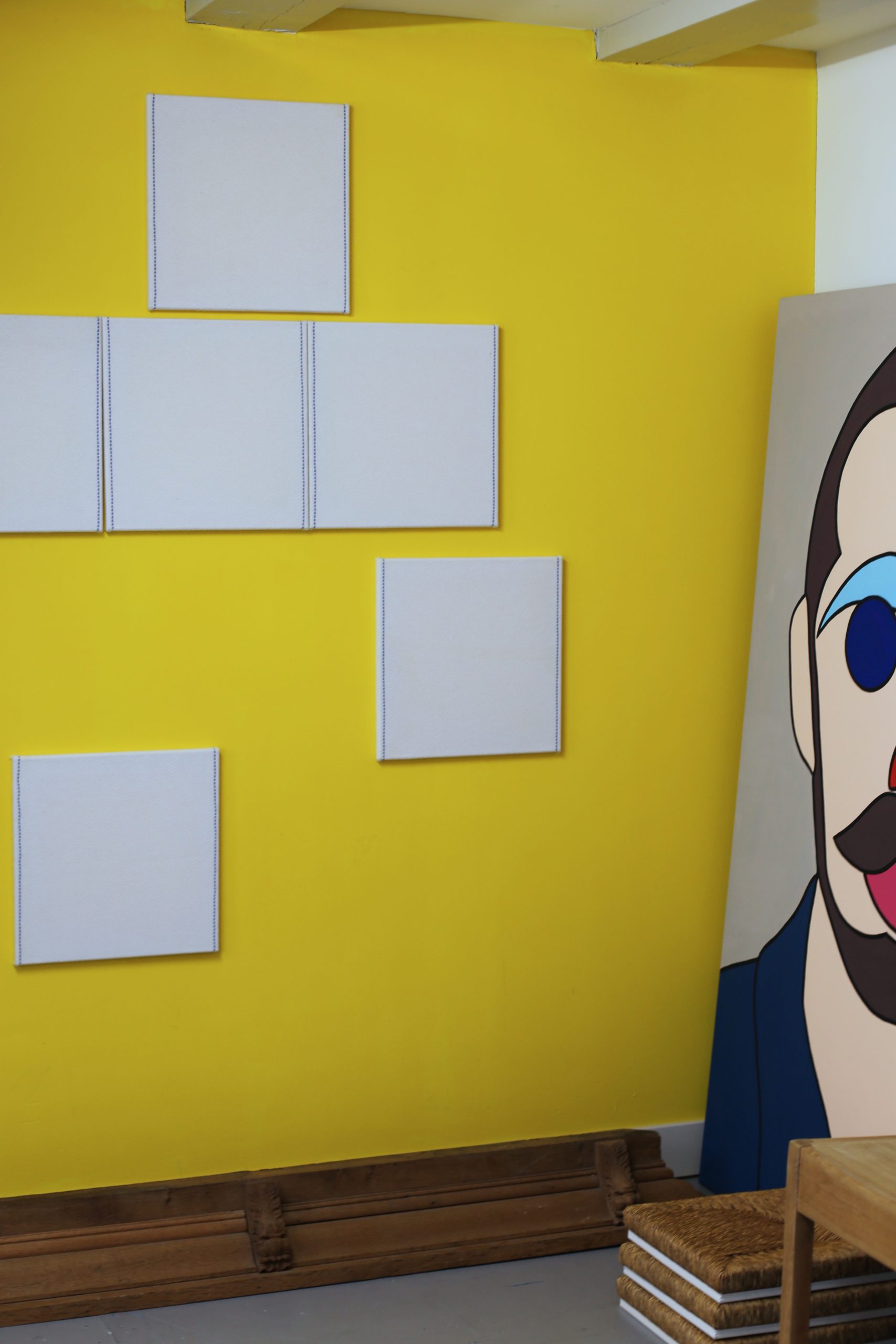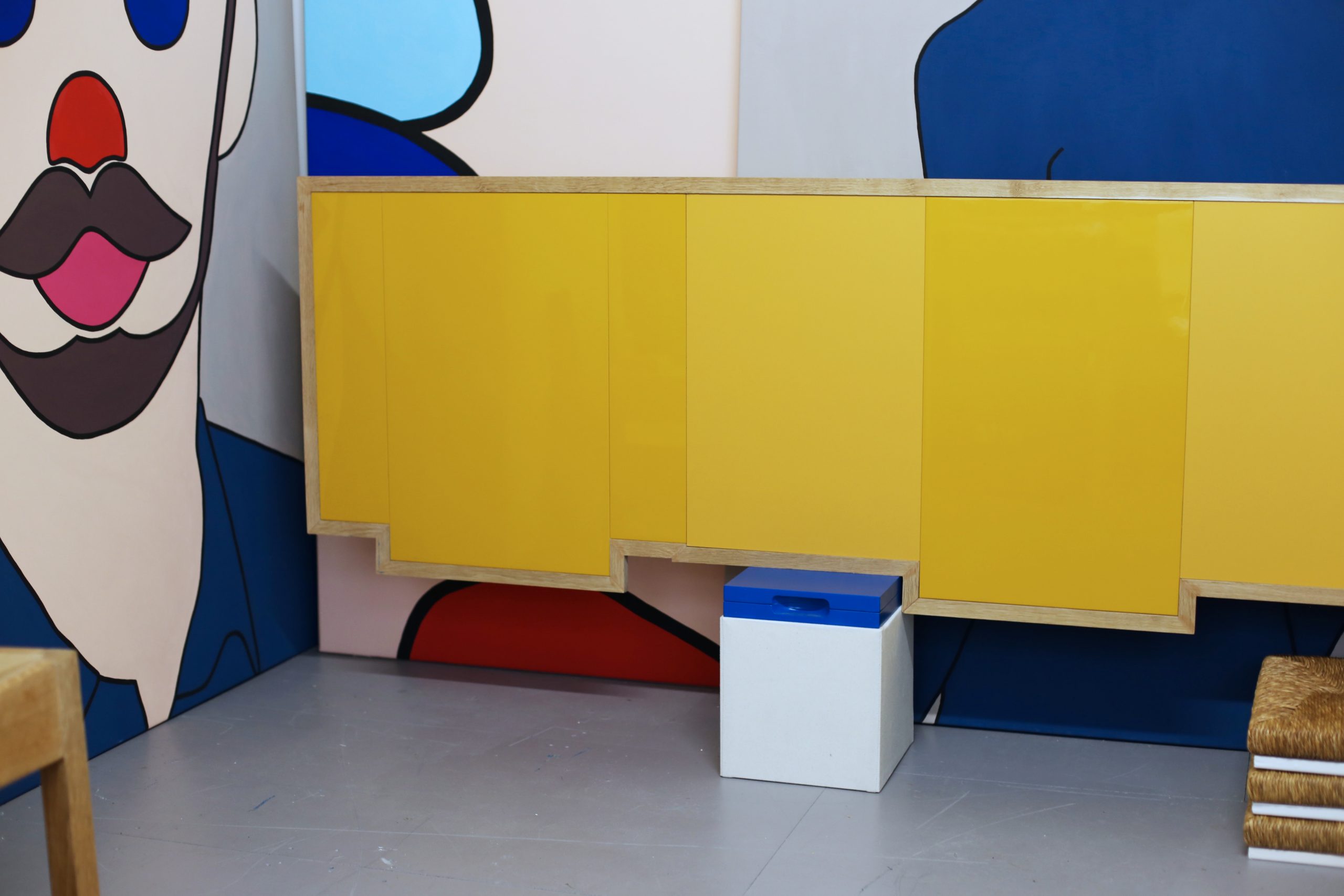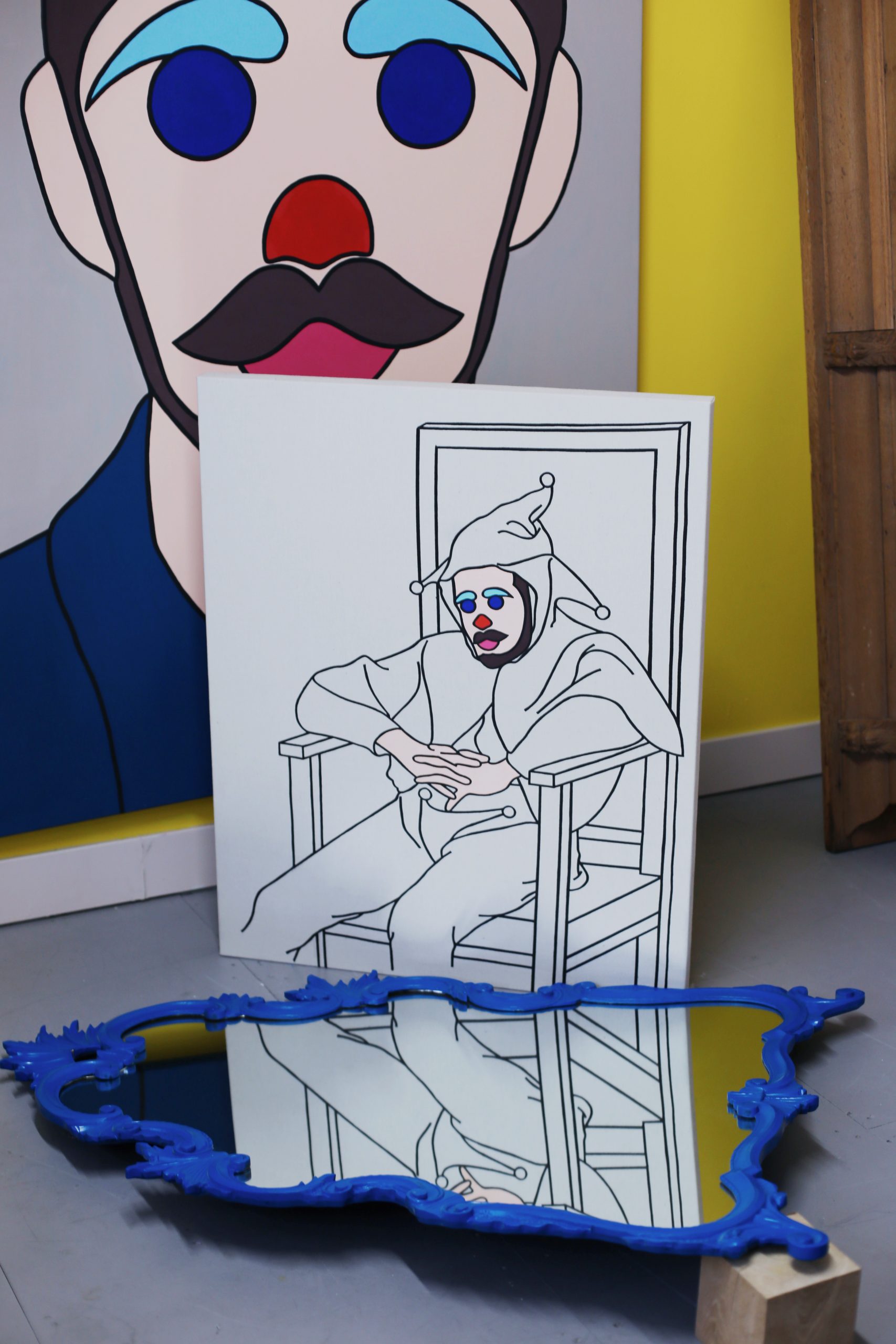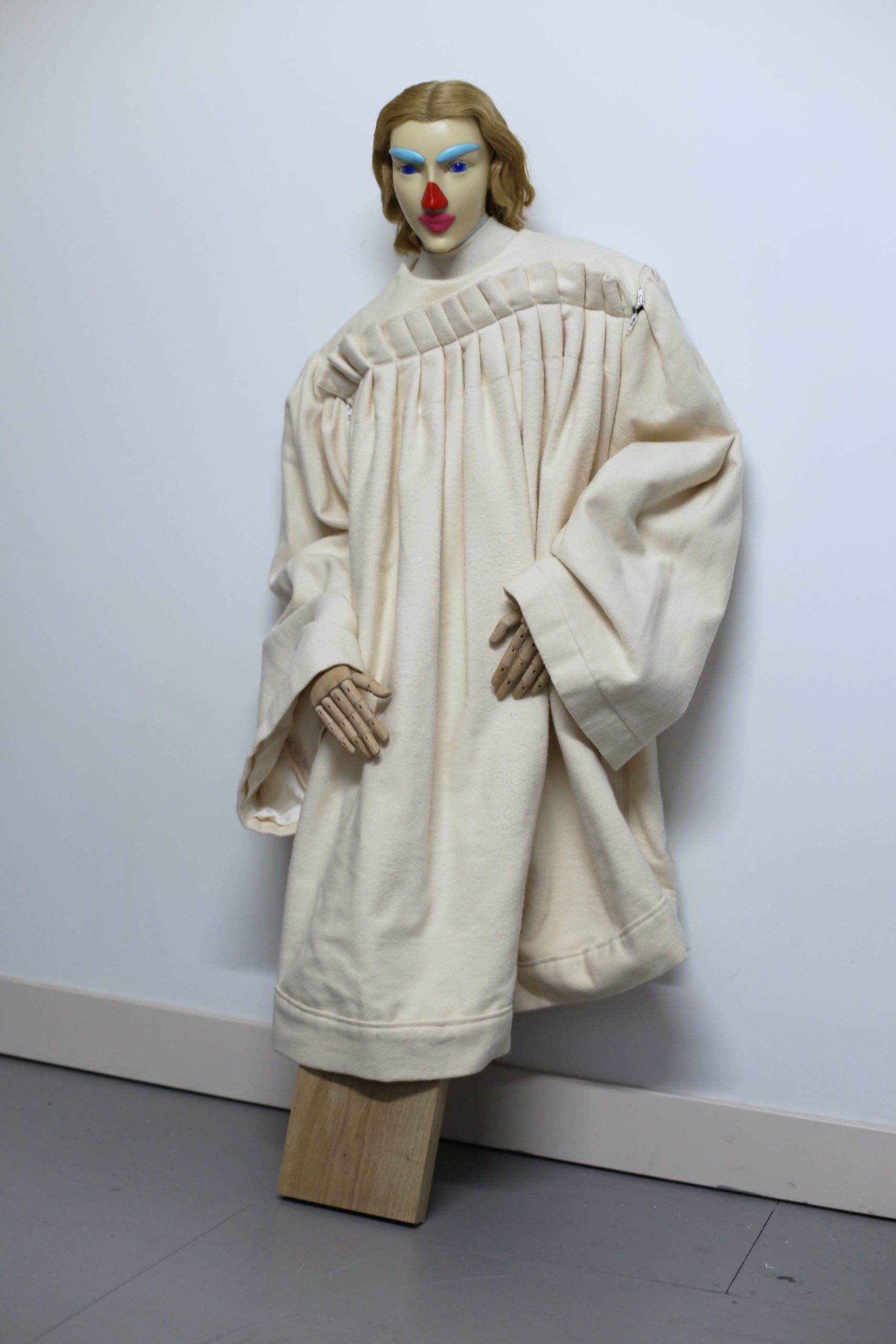Human after all is the result of a research trajectory that started in 2018 and brings together a host of references in an immersive, multidisciplinary, narrative installation that reflects on overcoming personal challenges and anxiety that are caused by individualism in today’s society. Both in subject, materiality and process the installation is an exercise in being awesome while failing miserably.
For this presentation in times of social distancing, a selection of (close to) finished works were photographed at home in different configurations and shared online. Later in 2020, the full installation will be presented physically (location to be announced).
Continue reading A post-religious triptych of comic-like self-portraits on monochrome grey backgrounds that lack any sense of context daunt the viewer with its indifferent presence. A life-size wax figure, a monk that is morphing into a clown, is grieving over the loss of divine purpose. The wise fool, a jester, is catching his breath before shapeshifting into another persona to keep others entertained. The space becomes more confined. A blue heaven, kept suspended above our heads, comes down disillusioned. A solid horizon, part matt, part glossy, obscures the view of what is behind, or in the future. Two chairs and a daybed are reminders of moments of passivity, anxiety and inward contemplation. A moment of solace. A tiny chest, discreetly placed in a corner, stores the things that make us feel nurtured. Playing cards are scattered over the floor but a small part of the house of cards remain. Three wicker panels are hung like icons of nostalgia and give a sense of home. Seven handwoven panels, resembling the Groningen kitchen towel, are randomly placed across the wall, like mementoes of personal accomplishment. A handcrafted mirror is placed under an angle on the floor, inviting us to look at ourselves from a different perspective. The installation Human after all creates an introverted and understated setting that refers to- and plays with collective and personal symbols and literary sources, in ways that are mostly intuitive and without a fixed storyline. Central to the work is the liberating yet oppressive nature of personal autonomy – and takes Friedrich Nietzsche’s writing as an important source of inspiration. Nietzsche states that humankind is not ready to face the consequences of the kind of life we shaped for ourselves after we took away the thing that was most central to it: faith. Nietzsche’s madman (the town fool) is aware of the dangers, but the people aren’t ready to hear the truth. “How shall we comfort ourselves […]?” – a question that resonates with us up to this day. Human after all is a personal exercise in overcoming the fear of failure and shortcomings that comes with the realisation that we are fully responsible for ourselves in today’s individualistic society. References from religion, commedia dell’arte, modernism, colour theory and Groningen crafts play a guiding role in leading the viewer through the narrative. The work reflects on how we play around like harlequins or clowns, continuously adapting to persona’s that would serve us best, but hide that we feel, in fact, alone and vulnerable – human, all too human. Through its subject, its materiality and the process, Human after all explores how embracing the struggle is necessary for self-overcoming – that we can be awesome if we allow ourselves to fail miserably.

–


